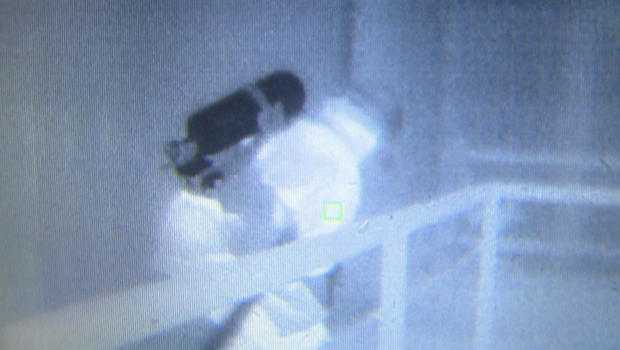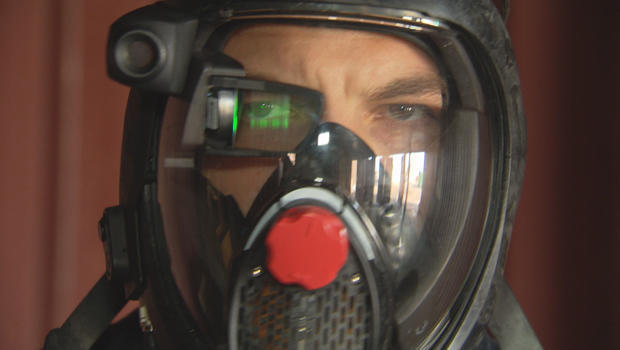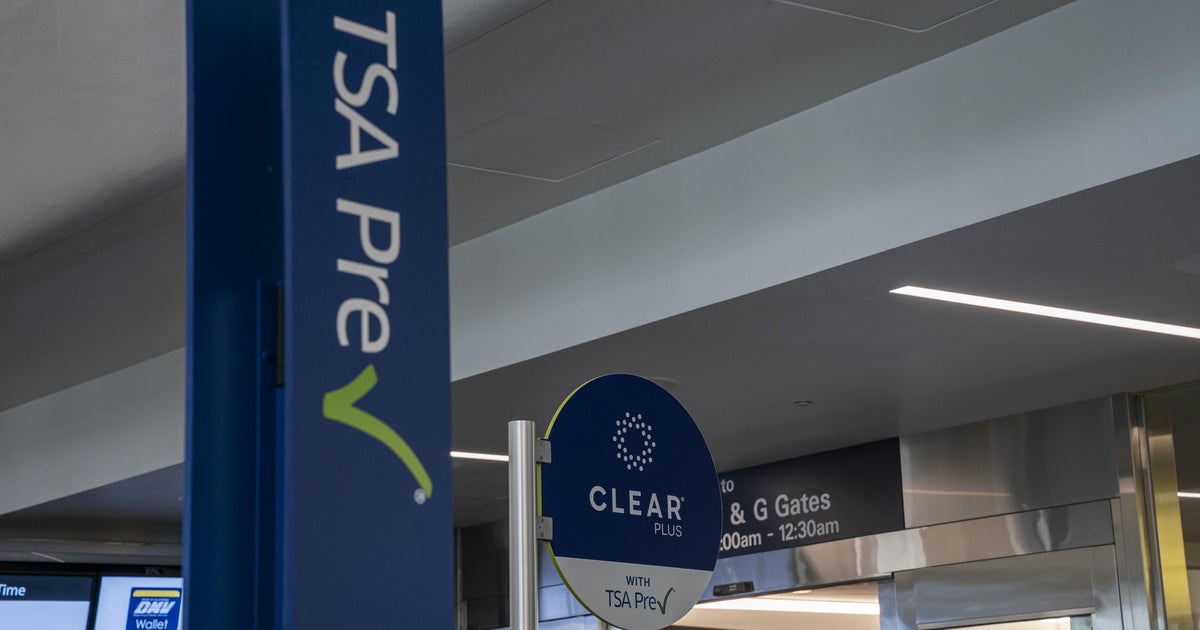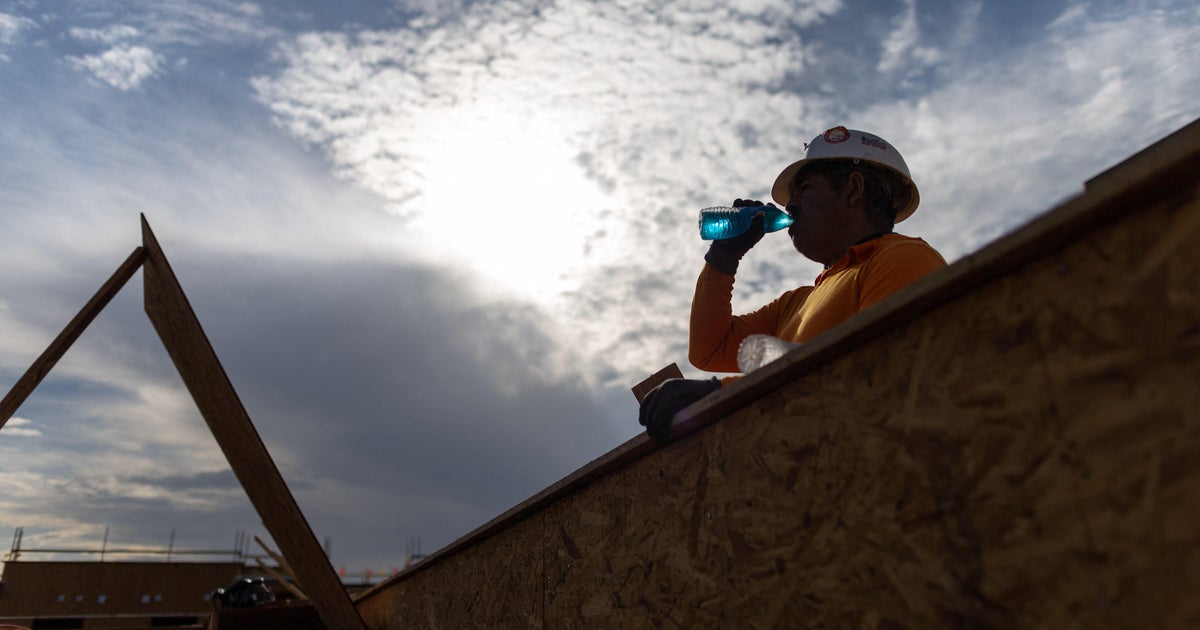New augmented reality technology could help firefighters save lives
There were nearly half a million structure fires in the U.S. last year, killing more than 2,700 people. Now, a Silicon Valley entrepreneur believes augmented reality (or AR) technology can help firefighters save more lives.
At the Menlo Park Fire District training facility in California, firefighters use drills to get better at saving lives. Their biggest challenge: operating in pitch-black, smoke-filled rooms. Special thermal cameras are needed just to be able to watch them train.
"You can't see your hand in front of your face," Menlo Park Batallion Chief Tom Calvert told CBS News correspondent Carter Evans. "When you lose eyesight, you take out a big chunk of your ability to gather information, and know where you're at."
Calvert says thermal cameras can only help so much. "Handheld thermal cameras was a huge leap forward in technology, but it has some limitations," he said.
"If you can't see your hand in front of your face, how well can you see the image on a screen in front of you?" asked Evans.
"It's not readily available to you," Calvert replied.
The solution was born in the belly of an active volcano in Nicaragua. Last year, explorer and digital entrepreneur Sam Cossman led a science expedition into the crater of the Masaya volcano. He said one of the issues he faced was being able to see where they were going inside the gas-filled crater. "We were looking to just navigate safely, and realized that the amazing core technology that thermal imaging is didn't quite cut it for us, so we looked to improve it."
The result is called C-Thru: a wearable, augmented reality display mounted inside a standard firefighter's mask.
"It can see through dark, and see through smoke," said Cossman. "The idea of putting something [in front of your eyes] so that it's always on, was the first step. But then the second step was simplifying it in a way that is reduced and made much more simple, just edges and contours of objects."
Menlo Park Fire Technology Specialist Mike Ralston helped turn the prototype into a functioning product.
The difference becomes obvious the moment one steps into the smoked-out training course.
A thermal camera mounted to the mask captures the surroundings. The C-Thru's computer processor adds green lines, which highlight walls, door frames, even a body lying on the floor.
As Evans discovered wearing the C-Thru, "I can see everything. I can see absolutely, I can see the multiple doorways, I can see the wall."
Ralston, meanwhile, was standing next to Evans without a mask on: "I can barely make it out here. This is kind of just like a little murky haze." Without the C-Thru, Ralston said, he'd stumble around, perhaps missing the body altogether. "Injuries and fatalities occur, sometimes within two or three feet of an actual exit," he said, "simply because they can't see, they can't find an exit that's right next to them."
Calvert said, "Most firefighters who die inside of buildings, that's where we get lost and trapped. I don't want to overuse the 'game-changing' phrase for this technology, but it is, it truly is."
Cossman says the device is still at least a year away from being commercially available to fire departments. He expects it will cost less than the $4,000-$6,000 they currently spend on each two-way radio that firefighters carry.
Evans said, "There might be critics who say that only rich fire departments can afford this."
"Certainly there's going to be critics, you know, with any new innovation," Cossman said. "Our goal is to get this technology so that it's accessible to a large majority of the fire departments on Day One, but ultimately, we expect that price to go down."
But with lives at stake on a daily basis, firefighters who've tried this out say Day One can't come fast enough.






